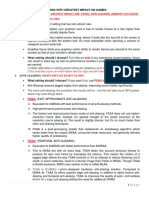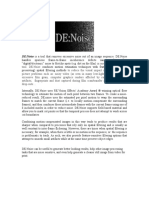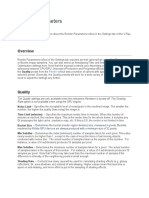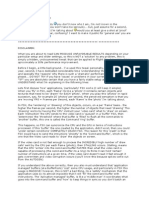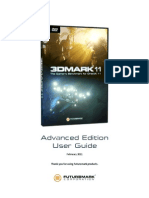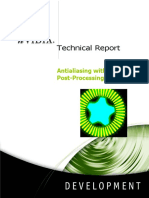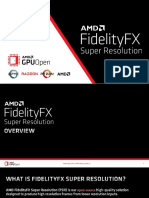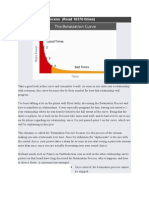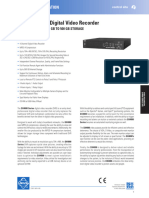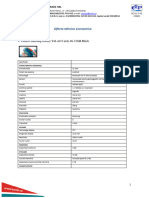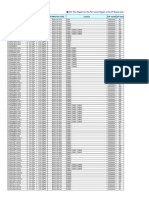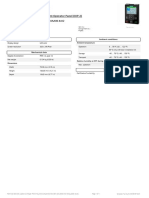Limiter with VSync: by capping your framerate to a value just below your refresh
rate (e.g. 58FPS cap on a 60Hz monitor), you may reduce the input lag from havi
ng VSync on. In short, it is recommended that you use the Frame Rate Limiter for
most of your games, capping your framerate at your refresh rate, or just below
it if VSync is on
IF can't get smooth 60fps lock your frame rate to 30 for smooth gameplay
Remember, in games where your FPS is consistently above your refresh rate, enabl
ing VSync is perfectly fine and results in no drop in FPS.
In general, I recommend starting off with VSync disabled in any game as this is
the most trouble-free method of gaining the fastest possible performance. This i
s the simplest solution, and on monitors which have a standard 60Hz refresh rate
, or for games in which your framerate is not consistently above 60FPS, this app
ears to be the best solution. You may notice some tearing, but this will general
ly be minimal if your FPS remains well below your refresh rate. Remember though
that whenever VSync is disabled the graphics card and monitor are not strictly i
n sync, and tearing (however minor) may occur at any time.
Nvidia graphics card owners running the latest drivers can find an Adaptive Vert
ical Synchronization option under the 'Vertical Sync' setting in the Nvidia Cont
rol Panel. When Adaptive is chosen, VSync will only be enabled whenever your FPS
exceeds your Refresh Rate. If your FPS falls below your refresh rate at any tim
e, VSync is instantly disabled. This provides an excellent compromise between pe
rformance and removing most tearing. However it can still introduce some mouse l
ag.
Antialiasing Levels
The first choice you have to make if you want to enable AA is the sample rate, t
ypically expressed as 2x, 4x, 8x etc. This tells your graphics hardware how many
pixel samples to take around the area to antialias - the higher the number, the
more pixel samples used to blend the jagged lines, and hence the smoother the i
mage will appear at the cost of greater processing power and hence lower perform
ance.
SMAA:
We present a new image-based, post-processing antialiasing technique, which offe
rs practical solutions to the common, open problems of existing filter-based rea
l-time antialiasing algorithms. Some of the new features include local contrast
analysis for more reliable edge detection, and a simple and effective way to han
dle sharp geometric features and diagonal lines. This, along with our accelerate
d and accurate pattern classification allows for a better reconstruction of silh
ouettes. Our method shows for the first time how to combine morphological antial
iasing (MLAA) with additional multi/supersampling strategies (MSAA, SSAA) for ac
curate subpixel features, and how to couple it with temporal reprojection; alway
s preserving the sharpness of the image. All these solutions combine synergies m
aking for a very robust technique, yielding results of better overall quality th
an previous approaches while more closely converging to MSAA/SSAA references but
maintaining extremely fast execution times. Additionally, we propose different
presets to better fit the available resources or particular needs of each scenar
io.
--------------------------------------------------------------------------------------------------------------------------------------------------------------------------------------------------The term Antialiasing (AA) refers to any method that can help smooth out jagged
�lines, and reduce the distracting shimmering and crawling of those lines when in
motion. Crytek has chosen to build several AA methods into Crysis 3: FXAA (Fast
Approximate Anti-Aliasing), SMAA (Subpixel Morphological Anti-Aliasing), MSAA (
MultiSample Anti-Aliasing), and TXAA (Temporal Anti-Aliasing). The reason for th
is choice of AA methods is that each has its benefits and drawbacks, both in ter
ms of image quality and performance. There is no single recommended optimal AA m
ethod, as it largely depends on a combination of your system's capabilities and
personal taste.
FXAA: A very efficient post-process AA technique, FXAA will remove much of the j
aggedness from the entire scene with minimal performance impact. The key issue w
ith FXAA is that it can introduce some blurriness.
SMAA: A post-process technique similar to FXAA, the SMAA in Crysis 3 has several
benefits over its faster brother. Firstly, unlike FXAA, SMAA does not result in
any significant blurring. Secondly, there are three different levels of SMAA to
choose from in Crysis 3: SMAA Low (1x), SMAA Medium (2Tx) and SMAA High (4x). S
MAA 1x is an enhanced form of MLAA (Morphological Anti-Aliasing); SMAA 2Tx is de
noted as such because it adds 2x Temporal SSAA (SuperSample Anti-Aliasing) to ML
AA to achieve its results; and SMAA 4x is a combination of MLAA, 2x Temporal SSA
A and 2x MSAA.
MSAA: Multi-Sample Anti-Aliasing (MSAA) is a more traditional and comprehensive,
but far more performance-sapping, AA method. It increases the sample rate of da
ta to better render object outlines, reducing their jaggedness. It is available
at three sample rates in Crysis 3: MSAA Low (2x), MSAA Medium (4x) and MSAA High
(8x). The higher the sample rate, the smoother jagged edges become, at a hefty
cost in performance.
TXAA: This option is only available if you are using an NVIDIA GTX 600 series or
GTX Titan graphics card. TXAA is based on MSAA, but places greater emphasis on
reducing shimmering when in motion, known as temporal aliasing. This distracting
shimmering can be particularly disastrous in Crysis 3 multiplayer when you're o
n the lookout for cloaked enemy nanosuits, which also shimmer. The available opt
ions are TXAA Medium (2xT) and TXAA High (4xT).
FXAA has an almost negligible FPS impact, making it an attractive choice for an
overall reduction in jaggedness.
SMAA Low (1x) is not far behind FXAA in terms of performance, and again is a goo
d choice for smoothing jaggedness while maintaining your framerate, but without
the blurring that FXAA brings.
SMAA Medium (2Tx) scores well, and is a viable option, especially for smoother f
oliage, as long as your overall framerate is high enough to avoid the ghosting i
t can cause.
SMAA High (4x) is not overly desirable as it has a sharp performance hit, and on
ce again requires a higher framerate to prevent ghosting.
MSAA is useful for those wanting smoother results than FXAA or SMAA, but has a s
ubstantial performance penalty, especially at 4x and 8x sample rates.
TXAA, especially at its Medium (2xT) level, is a viable option for those running
a suitable GTX 600 series or GTX Titan GPU. It has a moderate performance hit,
but at the same time better addresses overall jaggedness, particularly temporal
aliasing, albeit with some blurring.
